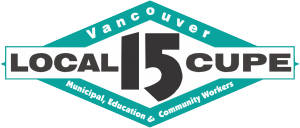Dylan Penner, March 2021
On February 23, 2021 the House of Commons Standing Committee on Transport, Infrastructure and Communities met to discuss the mandate of the Canada Infrastructure Bank. Included below are notes from Climate and Social Justice Campaigner Dylan Penner’s presentation to the committee about why the bank should stop supporting privatization and public-private partnerships. The full video is available here.
Intro and context
Thank you for the invitation to join this important discussion.
Using the Canada Infrastructure Bank (CIB) to advance infrastructure privatization and public-private partnership(s) is deeply misguided and dangerous. Here’s why.
What and who is the Canada Infrastructure Bank really for?
The CIB’s current structure promotes a flawed financing model of public-private partnerships (P3s), inviting and subsidizing private interests to take control of critical infrastructure and services that should be kept in public hands.
P3s are a tool that poorly invests public funds to further corporate interests while failing to support communities.
The CIB could play a critical role in supporting a just recovery from the pandemic and support the transition to a low-carbon economy. But not if it remains fixated on privatization and P3s.
Why P3s are bad
For infrastructure to truly be in the public interest it must be publicly owned and operated.
P3s eliminate jobs, lack transparency and exclude municipalities from the decision-making process. Given the failings of P3s, we should not be surprised that some CIB projects have been cancelled before they have even begun. Last summer, the township of Mapleton called off its plans to privatize its water infrastructure with the CIB because the privatization would have been too risky for the township.
P3s cost more
Canadians could benefit from the CIB – if it were returned to its original mandate. A federal provider of low-cost public financing for infrastructure projects would help municipalities from coast-to-coast-to-coast.
The current CIB model, which relies on private financing, often provides municipalities with loans with two to three times higher interest rates compared to public borrowing and requires financers to provide a return on investment for their shareholders. This results in significantly higher project costs with no added benefit for municipalities.
In a review of 74 P3s in Ontario in 2014, the Auditor General concluded that they cost the province $8 billion more than if they had been procured publicly. A similar report by the B.C. Auditor General suggested the 16 P3 projects cost the province nearly twice as much compared to public financing. The Ontario and BC governments wasted billions of public dollars by choosing P3s instead of public financing.
P3s deliver less
The climate crisis requires us to move quickly to decarbonize everything, including infrastructure. Publicly owned and operated infrastructure delivers more quickly than P3s, which are prone to failures and delays.
In an attempt to cut corners and maximize profits, private companies operating P3s often try to reduce their workforce and avoid “unnecessary” investments in the public interest, delivering poorer quality.
The business case for P3s often includes a significant “risk transfer” amount, presumably as the private sector takes on the risks associated with the project. However, the Ontario Auditor General has reported that this “risk transfer” factor in P3 projects is regularly inflated without evidence, often to favour the P3 option.
When it comes to essential services like water, sewage treatment or transit, the community and municipality still bear the consequences, and higher costs, when things go wrong.
P3s lack accountability and remove community control
Governments need the flexibility that comes with public infrastructure financing in order to enact strategic industrial policy.
Hiding behind confidential contracts, the entire process of negotiating and procurement of P3s is behind closed doors. The contract, once signed, takes away public control of the infrastructure and services, undermining that needed flexibility for several decades.
In March 2018, Ottawa city councillors had only three weeks to review their P3 contract for LRT (Light Rail Transit) Stage 2 before signing. They did not learn until after the fact that the winning consortium failed to meet the minimum technical score. In 2011, Berlin residents and citizen groups had to push for a referendum to publicize the contract for its privatized water services before ending up taking it back into public hands.
What is to be done?
P3s were a poor model before the pandemic. Now that we have the opportunity to build back better, P3s should play no role in Canada’s post-COVID recovery plan. Canadians need a just recovery plan that put communities ahead of corporate profits.
Take action for a just recovery for people and communities instead of corporate profits.


